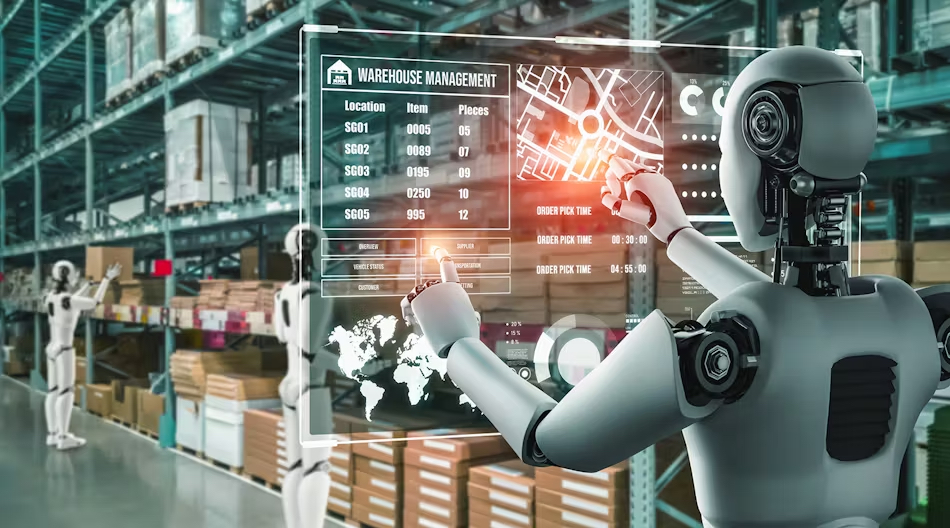Supply chain innovations are crucial for enhancing efficiency, reducing costs, and improving the overall resilience of supply chains. As global markets evolve and technology advances, businesses must adapt to new trends and technologies to stay competitive and responsive. This article explores key supply chain innovations, their benefits, and how they are reshaping the landscape of modern supply chains.

Importance of Supply Chain Innovations
- Increased Efficiency: Innovations can streamline processes, reduce bottlenecks, and improve the flow of goods and information, leading to greater operational efficiency and cost savings.
- Enhanced Visibility: Advanced technologies provide real-time visibility into supply chain activities, allowing for better monitoring, forecasting, and decision-making.
- Risk Management: Innovative solutions help identify and mitigate risks, such as supply disruptions and demand fluctuations, improving overall supply chain resilience.
- Customer Satisfaction: Enhanced supply chain capabilities enable businesses to better meet customer expectations for product availability, delivery times, and quality.
- Sustainability: Innovations contribute to more sustainable practices by optimizing resource use, reducing waste, and minimizing environmental impact.
Key Supply Chain Innovations
- Digital Twins: Digital twins are virtual models of physical supply chain assets and processes. They allow businesses to simulate and analyze supply chain scenarios in real-time.
- Simulation: Businesses can test different strategies and scenarios to optimize performance and identify potential issues before they occur.
- Blockchain Technology: Blockchain technology provides a secure and transparent way to track and verify transactions and data throughout the supply chain.
- Traceability: Blockchain enables end-to-end traceability, reducing fraud and ensuring the authenticity of products and transactions.
- Artificial Intelligence (AI) and Machine Learning: AI and machine learning algorithms analyze vast amounts of data to enhance forecasting, demand planning, and decision-making.
- Predictive Analytics: AI-driven predictive analytics improve demand forecasting and inventory management, reducing stockouts and excess inventory.
- Internet of Things (IoT): IoT involves embedding sensors and connected devices in supply chain assets to collect and transmit data in real-time.
- Real-Time Monitoring: IoT devices provide real-time insights into the condition and location of goods, enabling better tracking and management.
- Robotics and Automation: Robotics and automation technologies streamline repetitive and labor-intensive tasks, improving efficiency and reducing errors.
- Automated Warehousing: Automated systems, such as robotic picking and sorting, enhance warehouse operations and reduce labor costs.
- Advanced Analytics and Big Data: Advanced analytics and big data tools help businesses analyze large volumes of data to gain insights and drive strategic decisions.
- Data-Driven Decisions: Leveraging big data analytics allows for more informed decision-making and optimization of supply chain processes.
- Sustainable Practices: Innovations focused on sustainability aim to reduce the environmental impact of supply chains through eco-friendly practices and technologies.
- Green Logistics: Sustainable practices include optimizing transportation routes, reducing packaging waste, and adopting renewable energy sources.

Implementing Supply Chain Innovations
- Assess Needs and Objectives: Identify specific needs and objectives that innovations can address, such as improving efficiency, reducing costs, or enhancing visibility.
- Invest in Technology: Evaluate and invest in relevant technologies that align with business goals and offer potential benefits for supply chain operations.
- Integrate Systems: Ensure that new technologies and innovations are integrated with existing systems to create a cohesive and efficient supply chain.
- Train and Upskill Staff: Provide training and support to staff to ensure they can effectively use new technologies and adapt to changes in processes.
- Monitor and Evaluate: Continuously monitor the performance of innovations and evaluate their impact on supply chain operations to identify areas for improvement.
- Collaborate with Partners: Work with suppliers, customers, and other stakeholders to ensure successful implementation and collaboration on innovative solutions.
- Stay Updated: Keep abreast of emerging trends and technologies in supply chain management to continuously adapt and improve supply chain practices.
Challenges and Future Directions
- Integration Complexity: Integrating new technologies with existing systems can be complex and may require significant resources and expertise.
- Data Security: Ensuring the security and privacy of data, particularly with technologies like blockchain and IoT, is crucial for maintaining trust and compliance.
- Cost and Investment: The initial cost of implementing innovative technologies can be high, but the long-term benefits often outweigh these costs.
- Skill Gaps: Addressing skill gaps and providing training for employees to effectively use new technologies is essential for successful adoption.
- Regulatory Considerations: Navigating regulatory requirements related to data protection, environmental impact, and other aspects is important for compliance.
- Scalability: Ensuring that innovations can scale with business growth and adapt to changing market conditions is crucial for long-term success.
- Collaboration: Successful implementation of supply chain innovations often requires collaboration across the entire supply chain, including suppliers, customers, and technology providers.

Conclusion
Supply chain innovations are transforming the way businesses operate, offering opportunities for increased efficiency, improved visibility, and enhanced resilience. By adopting technologies such as digital twins, blockchain, AI, IoT, and robotics, businesses can optimize their supply chains and better meet customer demands. Implementing these innovations requires careful planning, investment, and collaboration, but the benefits of improved performance, cost savings, and sustainability make it a worthwhile endeavor. As supply chain technologies continue to evolve, staying informed and adaptable will be key to maintaining a competitive edge and achieving long-term success.


